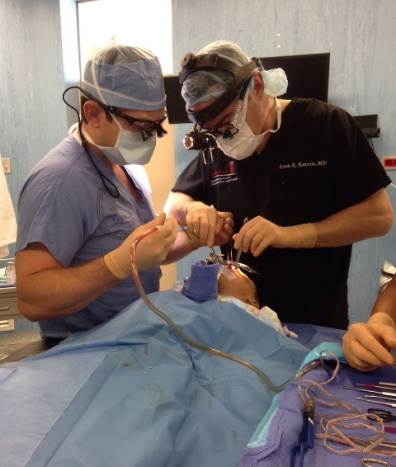What We Do – San Francisco
International medical missions
Healing the Children Northern California was started to organize and complete medical missions abroad, and this the sole focus of our chapter at this time. Each spring, HTC NorCal assembles a team of medical professionals administrative staff to travel to Peru (in conjunction with sister chapter HTC Northeast). There, we perform pro bono operations for local babies and children for about one week. The teams are made up of surgeons, anesthesiologists, CRNAs, anesthesia techs, OR nurses, recovery room nurses, scrub techs, speech therapist, audiologists, pediatricians and a few administrative staff members to help with all the paperwork and document the trip.
At this time, HTC NorCal is dedicated to cleft palate and cleft lip care, as well as a smaller number of microtia (congenital ear deformity) cases and other facial birth defects or injuries.



Focus on babies and children
Like it says in our name, the focus of our work is on babies and children. We strongly believe that surgical intervention for our patients early in life will give them the best chance to grow and develop as close to normally as possible. In addition, the nature of the diseases that we treat directs our attention to pediatric populations. In some cases, we will see an adult patient with an untreated deformity, or help an older patient with a complication from a prior surgery.
Collaboration with local doctors and students
During each medical mission, we dedicate some time for education and training of our counterparts in country. On the first day of each mission, the team runs a screening clinic. Here, we see all potential patients, identify those whom we can help, and schedules surgeries which take place during the rest of the week. At that time, we also see follow up patients from prior mission trips. Medical students and residents from the local hospital are invaluable in assisting with the organization of the clinic, and provide translation services when needed.
Throughout the mission, our team emphasizes on teaching the local staff and medical students. This includes side-by-side training in the operating room, at the bedside, and in the clinic, as well as formal presentations and lectures. In addition, our speech and language pathology specialists help the children and their families, along with their local care providers, to learn to use their repaired lips and palates for speaking and swallowing.
What is cleft lip and palate?
In most cases, we simply don’t know why lip and palate development go wrong. There are some environmental factors (nutrition or vitamin deficiency, exposure to toxins, etc.), but most studies support a strong role for genetic factors. Race or ethnicity and gender do play a small role, as clefts are most common in Southeast Asians and the indigenous peoples of Central and South America. Clefts are less common in whites (Caucasians) and least common in blacks (people of African descent). There are multiple medical problems associated with the cleft lip or palate, including poor feeding, delayed speech development, and possibly hearing issues from problems with the Eustachian tubes.
Treatment of clefts usually begins in the first few months of life, depending on the overall health of the child. In cases where a cleft lip and a cleft palate are present, the cleft lip is repaired first, generally around 3 months of age. For cleft lip surgery, the surgeon will make carefully planned incisions on each side of the cleft from the lip to the nostril. The intricate layers of the two sides of the lip are then sutured together, making sure that the muscle that helps the mouth move is repaired. All three layers of the delicate lip tissue are then repaired individually.
In the medical field, general agreement exists that surgical correction of a cleft palate should be accomplished when patients are younger than one year old, before significant speech development occurs. The potential benefits of an intact palate as a child begins to speak are believed to outweigh the possible complications of early closure. Surgery for both cleft palate and a cleft lip require general anesthesia because of the patient’s age and the need to closely monitor the breathing and vital signs.
The goal of repair in patients with cleft palate is to separate the mouth from the nose. The divide needs to be watertight and airtight in order to have normal speech and swallowing. The repair also helps with preserving
facial growth and the development of the teeth. Cleft palate surgery involves drawing tissue from either side of the mouth to rebuild the palate and repair the muscles of the roof of the mouth.
The necessity for more operations often depends on the severity of the cleft. Some children with a cleft palate require additional surgery to improve their speech. Additional procedures may also improve the appearance of the lip and nose, close openings between the mouth and nose, help breathing, and stabilize and realign the jaw. Lastly, many patients with a cleft lip have an asymmetric tip of the nose. This is partially corrected in the first surgery, but rhinoplasty (nose reshaping) can be performed after the child finishes growing.




